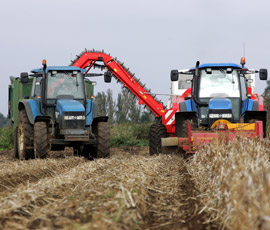Zebra chip nearly destroys potato business

A warning over a new disease, and an interesting debate over the merits of precision farming were highlights of the Cambridge University Potato Growers Research Association conference. Mike Abram reports
Zebra chip disease nearly destroyed a large USA potato growing business, its owner and chief executive told the conference.
Foliar symptoms of the disease, which was first found in Mexico in 1994 and has spread north since, were identified in CSS Farms potatoes in July 2007, Milt Carter said.
“By mid-August in the first year, there were large patches that were completely dead. To try to reduce the problem in storage, we marked to dead spots and did not harvest them. But there were still too many tubers affected by zebra chip that went into storage.”
The disease changes sugar levels in tubers causing unsightly black strips to appear in crisps when fried, rendering them unmarketable. At the time, little was understood about what caused the disease and how it was transmitted.
“We had numerous lost in 2007-08 that could not used for processing, which had to be fed to cattle or sold at a large discount for by-product use. It cost us $10m by the time the cause was identified and nearly put us out of business.”
The firm put two agronomists full time on the disease and its control, and used as much technical support as possible to try to combat it.
Finding that an insect, the potato psyllid, was responsible for the transmission of a bacteria, Candidatus liberibacterium solanacearum, that caused the disease was an important breakthrough, but the control programme costs the firm $1.5m a year across the 4,400ha of potatoes the firm grows in six states, Mr Carter said.
“It has taken a multi-faceted programme to effectively control psyllids, which includes season-long applications of insecticides, later planting to avoid damage from the early influx of pysllids, which tend to have a higher proportion carrying the bacteria, exclusive use of ground rather than aerial applications, and better control of volunteer potatoes in rotation crops.”

